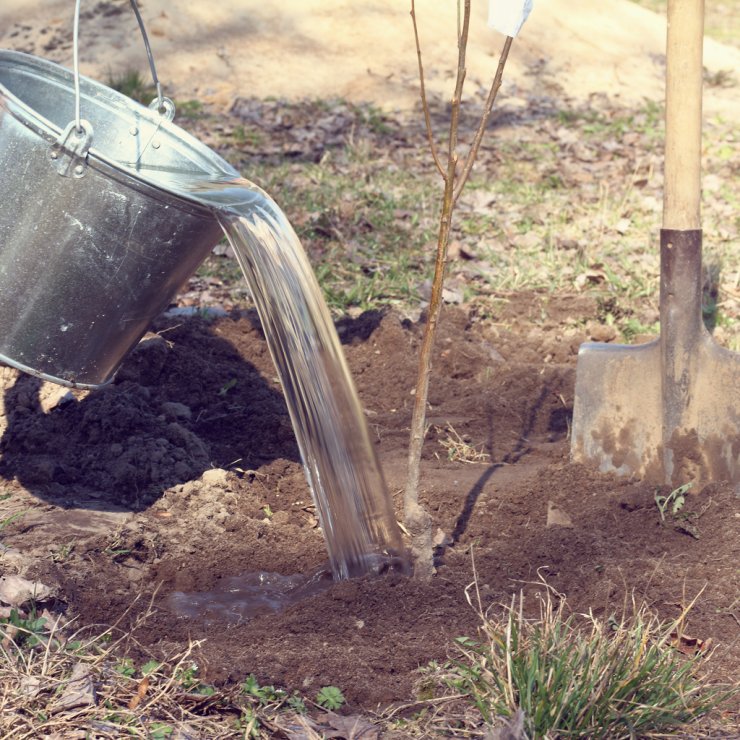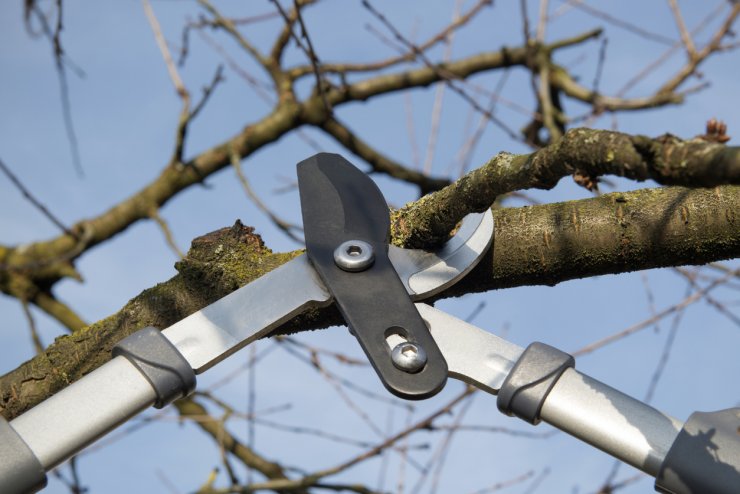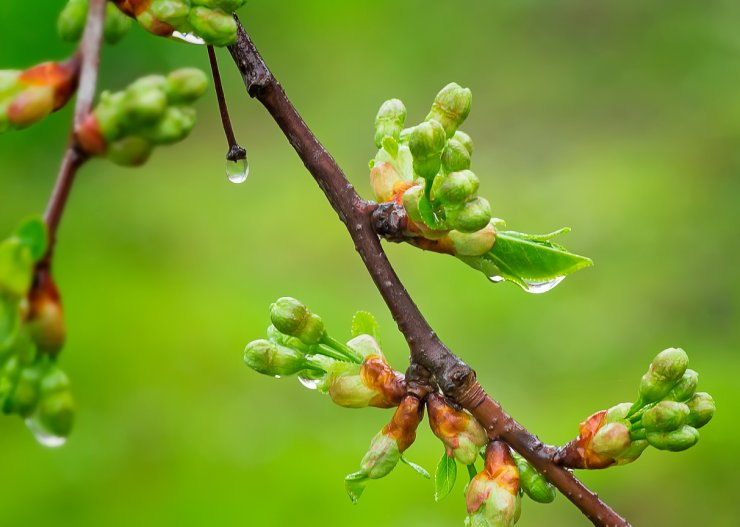
Watering a cherry sapling
Watering Your Cherry Trees
As with any plant, watering your cherry trees is an important consideration. Once you’ve planted your trees, you’ll want to keep them consistently watered, but not soaked, for the first year. About an inch of rain every seven to 10 days is sufficient. Use a practical rain gauge to make it easy to keep track of this.
If you don’t get enough rain, you can water once a week. Don’t over-saturate the roots, because dry roots are healthier than soaked ones. A good soaking once a week during dry spells is plenty.
For established trees, give them a deep soak when the top few inches of the soil are dry. The best method for this is to let a garden hose trickle slowly around the root zone. Use a soaker hose to water multiple trees. Give the trees enough water to soak the ground all around the roots.
Above all, don’t overwater your tree. Waterlogged roots are the worst state for cherries.
If you’ve mulched, that will help keep the soil around the roots moist and cool. Don’t forget to give your cherries extra moisture going into winter, especially after a dry fall.
-
Tip: Early morning is the best time of day to water your cherry trees. Avoid watering during the evening or night.
Weeding Your Cherry Trees
When it comes to weeding around your cherry trees, early and often is best. If you’ve used weed-free soil and well-rotted organic matter, and laid down mulch, you shouldn’t have a big weed problem.
Properly preparing your soil is an excellent preventive measure against the emergence of weeds. When you till or cultivate the area where you’ll plant your cherry tree, remove weeds and debris. You’ll likely find that the first few weeks after planting are the only time you’ll be pulling up weeds around your tree.
If weeds spring up around your cherry trees during the growing season, work the soil around the base of the plants with a hoe—only deep enough to kill the weeds and not damage the plant’s roots.
Fertilizing Your Cherry Trees
![Cherries are low feeders, but still need fertilizer once a year.]](/wp-content/uploads/2021/03/Fertilize-Cherry-Tree-740x493.jpg)
Cherries are low feeders, but still need fertilizer once a year.
The most important thing to remember about fertilizing is that you should do it based on a soil test. Then choose a fertilizer that supplements any nutritional deficiencies in your soil.
Cherry trees are low feeders, unlike many other fruiting trees. You can fertilize once per year in early spring before flowers bloom. (You can still fertilize after bud break, but absolutely do not fertilize after July 1.) For young trees, choose a fertilizer that amends your soil, or if that’s not necessary, use a low-nitrogen or general-purpose fertilizer, such as 5-10-10 or 10-15-15, at half the recommended rate. If you’d rather use compost, apply it twice a year, using only a light application.
When applying fertilizer, remember to feed the soil rather than the tree. And be careful not to over-fertilize, which could produce an unbalanced tree that can affect fruit production and leave the tree susceptible to pests and disease.
Although many trees require more nitrogen after they start bearing fruit, cherry trees do not. Check your soil’s nutrients every year, and only apply nitrogen to mature trees if the soil needs it. Remember to keep the area clear of weeds, as weeds will compete with your trees for nutrients.
Pruning Your Cherry Trees

Prune cherry trees twice a year for maximum production and longevity.
Lack of regular, moderate pruning is one of the most common causes of low or no fruit production. On the other hand, removing more than a third of the tree could have the same effect on fruit production, stimulating the growth of branches instead of fruit.
There are three main reasons you should prune your cherry tree: its survival, stimulation, and shaping. However, it’s not necessary to thin the fruit, since cherry trees do this on their own.
For survival, pruning helps balance the top growth of your tree with the root system, which loses many of its fine feeder roots during transplant. It gives the roots time to re-establish themselves.
For stimulation, pruning stimulates stronger, more vigorous growth from remaining buds. A pruned tree will be bigger, with stronger branching, than an unpruned tree.
Shaping the tree gives it the structure it needs for maximum fruit production, with adequate space for air circulation and sunlight penetration.

Prune trees the first time prior to buds breaking.
You should prune your tree twice a year. Start in early spring before buds break but after threat of a cold snap. (In zone 6 and north, do this in late winter.) Make the shaping cuts that remove limbs and large branches. Prune sweet cherry trees to a central leader that encourages scaffold development to support the canopy and keep the fruit from becoming overexposed to the sun and other elements.
For sour cherry trees, go for more of a modified central leader and a vase-shaped or open center structure, to provide light penetration and air circulation.
This pruning is also aimed at providing the tree with a few strong limbs for bearing fruit, instead of many weak limbs that can’t support the weight of fruit.
Prune a second time in late summer. This pruning is intended to clean up the canopy and increase air circulation as a preventive measure protecting against fungal infections. Instead of shaping the tree, you’re only opening things up with a few cuts.
Above all, if you keep up with your pruning, you’ll have a healthier tree and also a less labor-intensive task each time you prune, involving small, easy-to-heal cuts.
Off-Season Pruning
Sometimes you have to prune outside the normal schedule. If a branch is broken by the wind or by a heavy load of fruit, you’ll have to take emergency action. You want to prune to clean up ragged edges, making a flush cut that leaves no stub. Damaged, dead, or diseased limbs, or suckers, should all be removed as soon as you see them.
How often do you water or fertilize your cherry trees? Have you faced any challenges with weeding or pruning your cherry trees? Please comment below and share your experiences.


 Previous
Previous


I was checking what an “flush cut” means and read that Iowa State university say that you must not make a flush cut? Which is true https://hortnews.extension.iastate.edu/faq/when-pruning-trees-it-desirable-make-flush-cuts